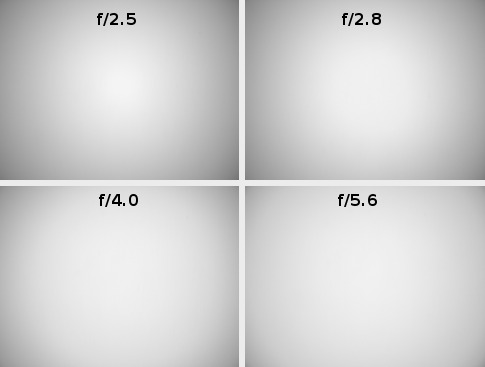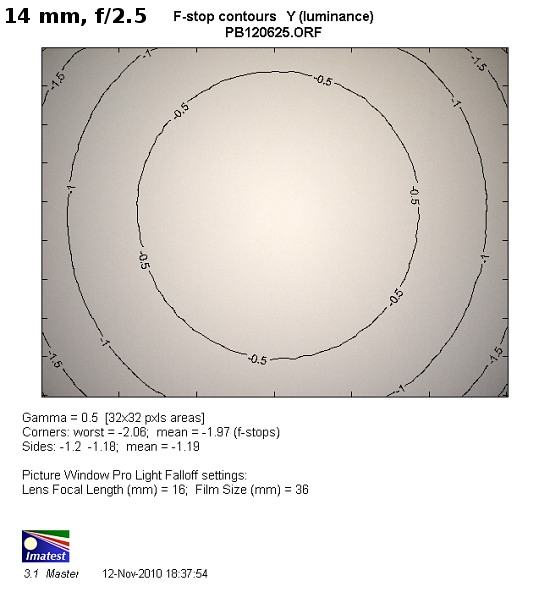Panasonic G 14 mm f/2.5 ASPH.
8. Vignetting

As you see the problems are huge. Taking into account the small size of the 4/3 sensor, which makes it easier to design vignetting-free optics, it is a quite significant slip-up indeed. At the maximum relative aperture the lens loses as much as 49% of light in the frame corners (-1.97 EV). Unfortunately the stopping down of the aperture helps to a rather scant degree. When we stop down the lens to f/2.8 the vignetting decreases to 45% and by f/4.0 it amounts to 40%. By f/5.6 the brightness loss in the frame corners comes to 35% and by f/8.0 it reaches still a visible level of 32%. Even applying f/11 aperture we can’t get rid of that problem because then we still have the vignetting of 28%.
Please Support UsIf you enjoy our reviews and articles, and you want us to continue our work please, support our website by donating through PayPal. The funds are going to be used for paying our editorial team, renting servers, and equipping our testing studio; only that way we will be able to continue providing you interesting content for free. |
- - - - - - - - - - - - - - - - - - - - - - - - - - - - - - - - - - - - - - - - - - - - - - - -
It should be mentioned here that if you save photos in JPEG format, the vignetting values are by several percent lower – it is due to aforementioned cropping of images after correcting the distortion.
 |






